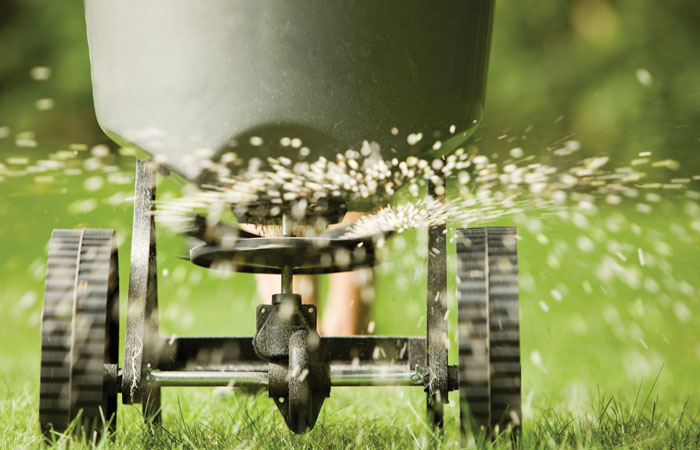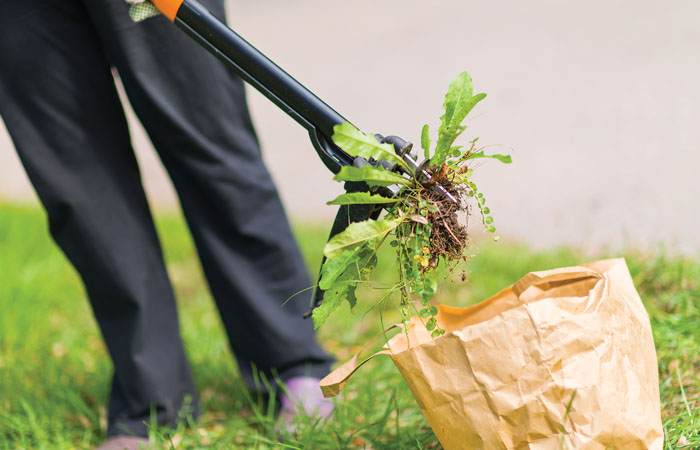The Fall brings us a lot of wonderful things. Things like amazing golf course conditions, cooler weather, colorful leaves and foliage, college and high school football and of course beautiful winter landscape plantings. Now is the time to make those winter annual and perennial decisions and not surprisingly the question that I answer most this time of year around the club is, “what are the best winter flowers to plant at my home or business”? Buckle up avid golfers there is a lot to talk about but before we get into my lists of top performing winter flowers let’s review some of the basics of floriculture (the art and science of flower cultivation).
Annuals Verses Perennials and Winter (cool season) Flowers Verses Summer (warm season) Annuals
It is important to understand a few basic terms as they apply to flowers before you start planting. First, understand that there are two basic types of flowers. There are annual flowers and perennial flowers. The difference in annual and perennial flowers has to do with their life cycle. Annual flowers germinate from seed grow and die in one season and they will not regrow the following season. Whereas perennial flowers grow and flower in one season and then go dormant but will regrow from the roots the following season and can grow and recover for many years. There is also a difference between winter or cool season flowers and summer or warm season flowers, the difference is about the timing of optimum growth for the plant. Warm season flowers/plants emerge in spring lasting through the summer and die back at first frost while winter or cool season flowers thrive in late fall throughout the winter dying back when the warmer temperatures of spring/summer arrive. Quite often the best landscapes and floriculture include a flower or color rotation that moves on a calendar rotating between winter and summer plantings usually planting cool season flowers in October and warm season flowers in May. It is also popular to mix annual and perennial flowers together to accent the ornamental aesthetics especially in high visibility areas. Examples of cool season annuals include pansies, violas, dianthus and ornamental kale/cabbage. Examples of winter flowering perennials include jonquils, tulips, primrose and candytuft. Examples of warm season annuals include vinca, begonia and coleus. Examples of warm season perinnials include daylilies, hosta and liriope. For our purposes in this article we will be focusing on winter or cool season flowers and how to maximize your results and minimize your expenses.

Flower Bed Basics
Make sure that you give your flowers the best growing environment possible. This includes ensuring that your flower beds have quality soils and are well drained. I recommend amending your flower beds with the best soils you can afford. Many commercial potting soils are sterilized and have fertility and wetting agents (help with drought resistance) pre mixed in proper ratios. If you are unsure about your soils characteristics you can have a soil sample tested and know for sure. Now for the insider tip just like for lawns, you can have a quick soil test done for just $12.00 by the Texas A&M Agrilife Extension Service, providing basic soil analysis and recommendations on the crop (in this case flowers) being grown. You can get all the information about soil testing including how to take a proper soil sample at their website http://soiltesting.tamu.edu so no excuses. The soil report will tell you the exact formulation of fertilizer to use and at what rate to apply to keep your plants/flowers healthy. To speed up the process here is a quick guide on how to take a proper soil sample.
How to Take a Soil Sample
Tools Needed: Medium Sized Container, Soil Sample Bag(s) these are available through Texas A&M Agrilife Extension Service (http://soiltesting.tamu.edu), Soil Probe or Hand Spade, Pen or Black Permeant marker, Clip Board and Paper (to record dates and notes).
Step 1: Inspect the area (flower bed) make sure it is not too wet.
Step 2: Use a soil probe or spade to remove a 3” to 4” (average crop root depth) deep section of soil from 10 or more places equally spaced covering the entire area being sampled in a grid pattern. Remove any leaves, roots or debris and place only clean soil into your medium sized container.
Step 3: Mix all of the samples in the container together completely to make sure the samples are mixed as one new soil, make sure the aggregate mix is relatively dry.
Step 4: Fill out all of the address and crop (be sure to identify your plants/flowers) information on the soil sample bag with a pen or black permeant marker and be sure to write legibly, take notes on location conditions and shipping information to build a data history.
Step 5: Fill the soil sample bag to the designated fill line (do not overfill).
Step 6: Follow the shipping instructions on the bag.

You should also verify the amount of sunlight your flower bed gets. The Sunseeker phone app is a great tool for this task and as a general rule flowers are divided into four groups as related to light requirements. They are Shade (<1 hour of sun), Part-Shade (2 to 4 hours of sun or filtered sun), Part Sun (5 to 7 hours of sun), and Full Sun (8> hours of sun). Finding the exact match for the light requirements of a plant is often a trial and error exercise but these are good starting points.
Make sure that you water your flowers/plants properly. Know the water needs of the plants you cultivate. Remember that cacti use less water than begonias and full sun plants use more water than shade plants. There are inexpensive moisture meters that can tell you when to water but the old school tip is if you can hold the soil in your hand then squeeze it into a ball and the soil hold its shape it’s OK but if the particles feel dry and fall apart water is needed. If you see the plant wilting or showing loss of color water is needed. Try to keep a consistent watering schedule such as watering to field capacity (this is the maximum amount of water that a soil can hold without puddling every two to three rainless days. Do not overwater! Many well-meaning novice gardeners kill their plants with kindness by overwatering. There are more scientific ways to water such as calculating evapotranspiration but for the home owner watching the weather and checking the plant’s general health regularly will work just fine. The daily appearance of an attentive gardener’s shadow can solve most plant problems.
Our Favorite North Texas Winter Flowers/Plants
Now for the moment you have been reading for here are some of our favorite North Texas Winter Flowers/Plants. Note that many varieties are sold as a mix of primary colors if you prefer a variety of colors.
Dianthus: These plants are great winter choices but be aware they won’t bloom heavily during the heart of winter but when they do bloom they are vibrant especially in late winter early spring. We prefer the Ideal Select Series Dianthus (Mix, Red, Violet and White)
Dusty Miller: While more noted for its silver/grey foliage it’s winter hardy and can last several seasons providing year round beauty. If unpruned it will produce a yellow flower. Our favorite variety is Silver Dust followed by New Look.
Ornamental Cabbage, Kale & Chard: These foliage beauties are welcome splashes of color and texture. Our favorites include Cabbage (Osaka Red), Kale (Coral Prince, Nagoya Red), Swiss Chard (Bright Lights)
Snap Dragon: Unique flowers available in many colors. Our favorites include Snaptini Series (Mix and White), Snapshot Series (Burgundy Bi-color, Orange/Yellow) and Speedy Sonnet Series (Crimson, Pink and Yellow)
Violas and Pansies: All pansies are actually violas but violas tend to have smaller blooms than pansies as a general rule. Some of our favorite varieties include Trailing Pansies (Cool Wave and Freefall Series), Large Pansies or Colossus Series (Deep Blue and Yellow Blotch), Delta Series Pansy (White, Violet, Red and Pure Yellow), Colormax Series Viola (Purple Glow and Blue Icy), Sorbet XP Series Viola (True Blue, Red Blotch and Deep Orange)
There are many more winter plants and cultivars to choose from and they are available at your local nursery or garden center. Best of luck in your winter flower garden and remember to make time to play lots of golf even as the days get shorter and continue reading Avidgolfer magazine.